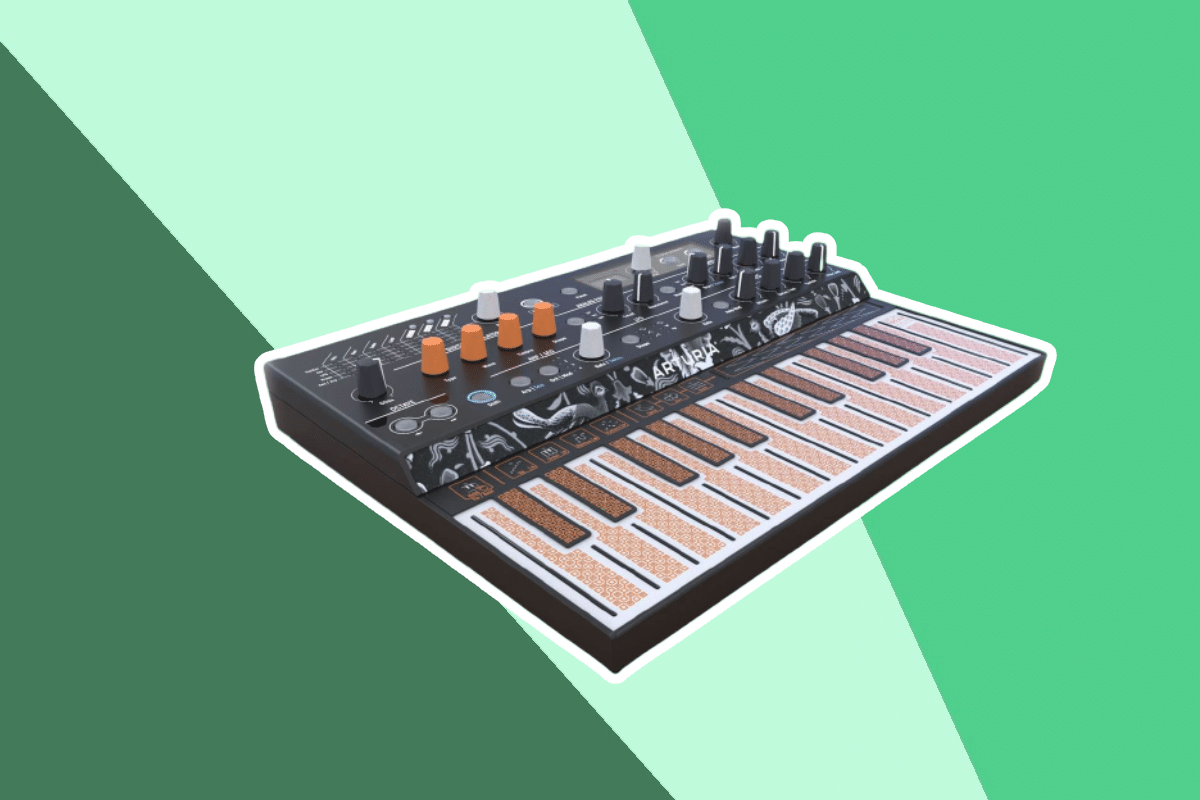
If you are interested in getting into producing electronic music, you may think that you know exactly what synth to look for. But, assumptions rarely turn out accurate and not all synths are as good as the marketing hype.
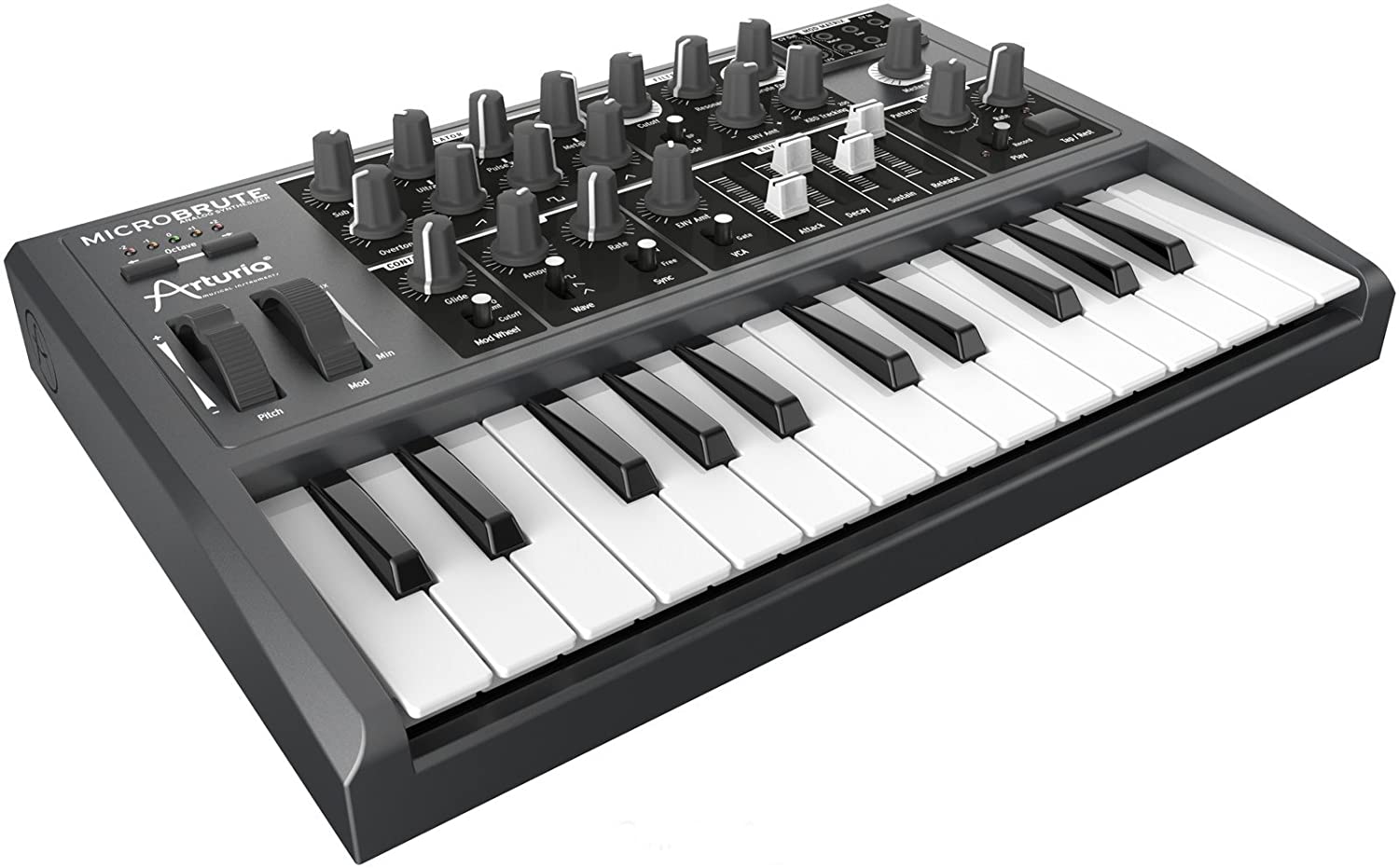

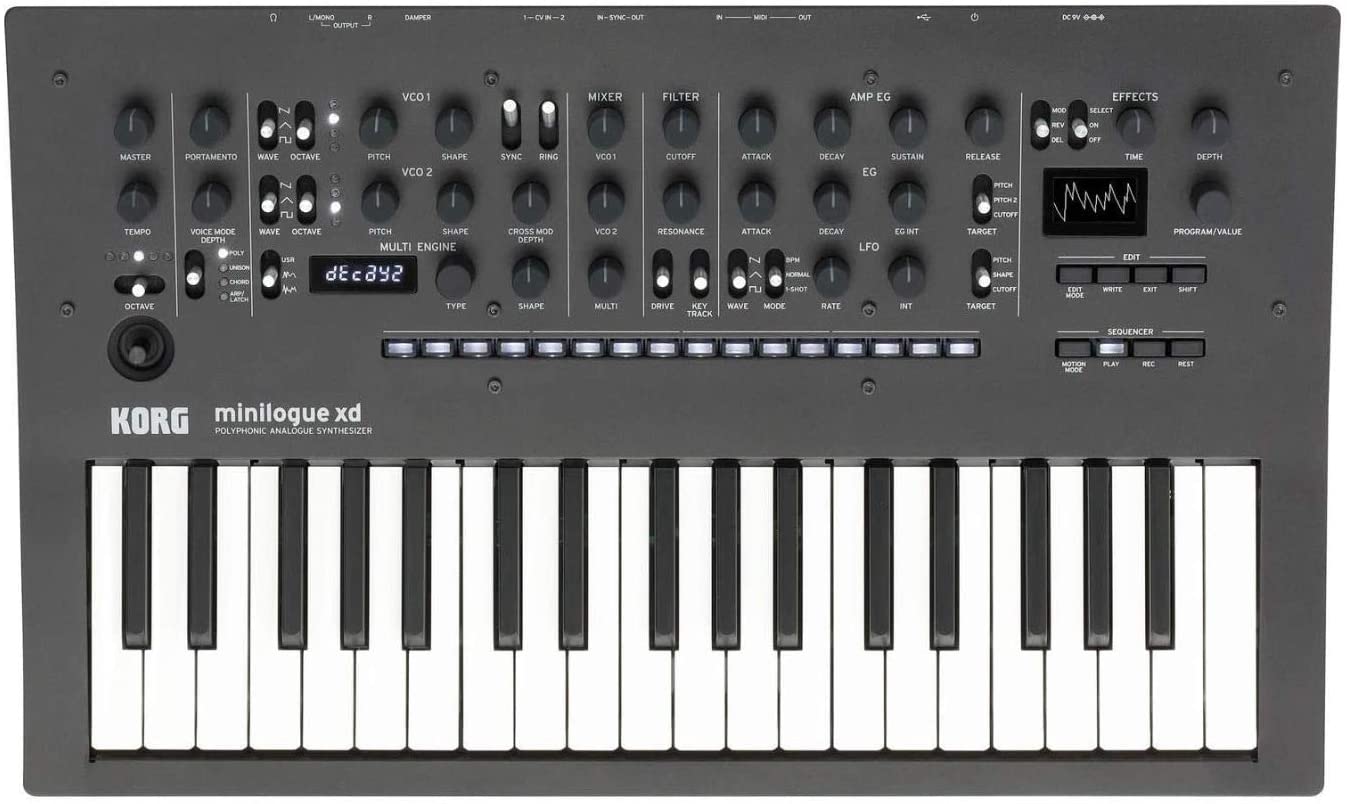

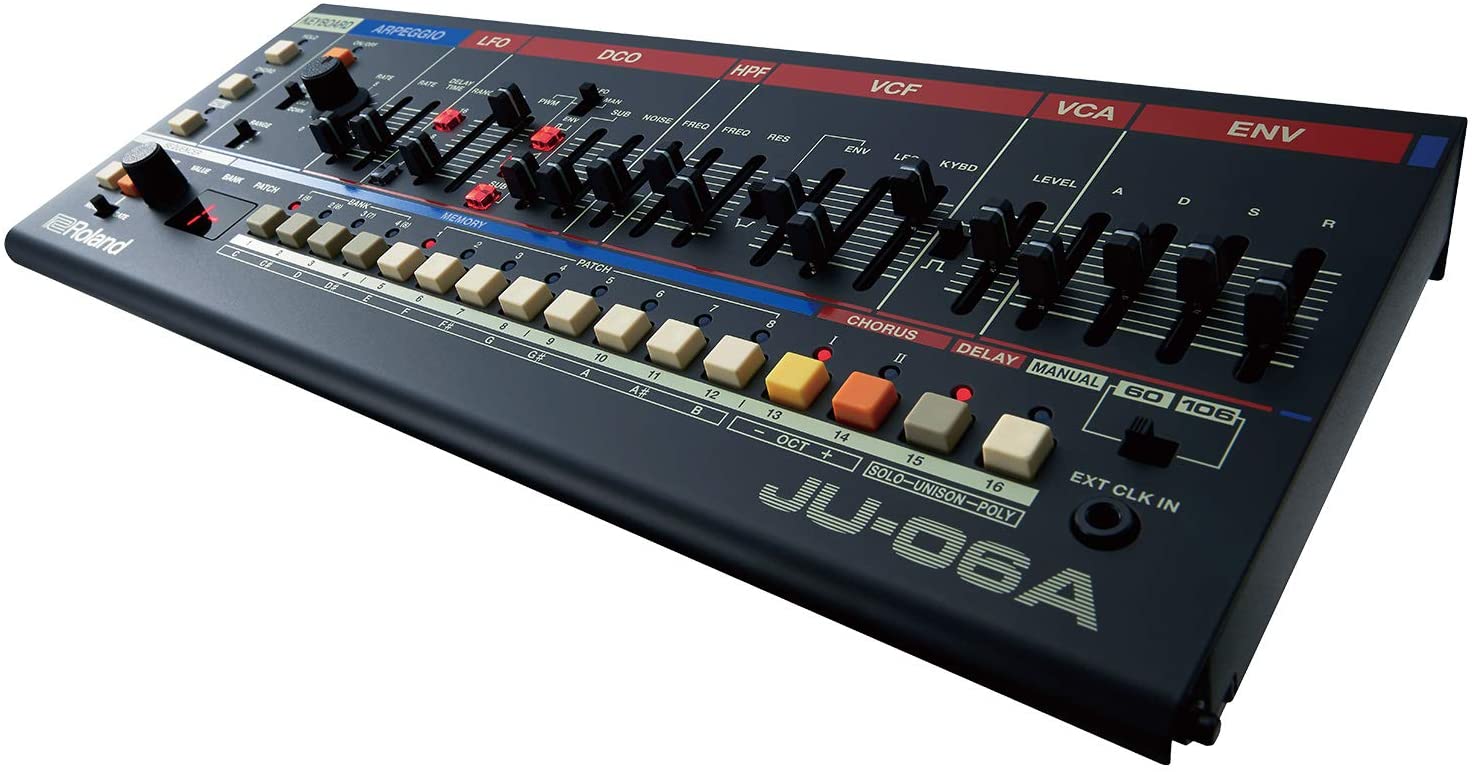

In our quest to find the best synthesizer for beginners, we assessed a number of different models from different brands. We looked out the sound engines, if they are analog or digital, and what polyphony each model can offer you. We also considered the keyboard features and controls, which significantly impact the functionality of the synth. Finally, we reviewed the audio quality of the synths and their connectivity. All of this information allowed us to determine the best model to suit beginners or more experienced players.
| № | Name | Rating | |
|---|---|---|---|
| 1 | Arturia MicroBrute |
9,5
|
Check price |
| 2 | Korg Minilogue XD Gen Synthesizer |
9,3
|
Check price |
| 3 | Roland JU-06A |
9,0
|
Check price |
| 4 | Arturia MicroFreak |
8,9
|
Check price |
| 5 | Behringer Crave |
8,7
|
Check price |
Connectivity: 1/4″ Audio In, 1/4″ (line out), 1/8″ headphones, USB type B, MIDI In/USB, CV Gate I/O, Mod Matrix

If you’re looking for the best starter synth it would be hard to not recommend the Arturia MicroBrute. This is a small format synthesizer with keys, a multifunction oscillator with a mixer section and a patch bay. This is a monophonic synthesizer and you can only play one note at a time but it’s surprisingly versatile for the modest price and this is why it’s our editor’s choice. This synth has no memory locations if you want to “save” a sound you need to make some notes, use an overlay or take a picture on your phone.
The building block of any synthesized sound comes from the oscillators and the wave shapes they can create. The MicroBrute has a single oscillator with four waveforms, they are: saw, square, triangle and sub. To further enhance the character of the waveforms each one has a distinctive signal enhancer, they are: metallizer, ultrasaw. Overtone and pulse width modulation. Each waveform has its own dedicated slider and you can mix and match them together as you like.
To sculpt the sound further there are dedicated knobs for the LFO, amp envelope, sequencer and patch points to create new connections. The sounds ultimately pass through a Steiner Parker filter that sounds very musical and there is a Brute Factor distortion circuit to add as much grit as you like.
Connectivity: 2 x 1/4″ (L/Mono, R), 1/4″ headphones, USBG type B, MIDI In/Out/USB, 1/4″ (damper), 2 x CV in, Sync In, Sync Out

The Korg Minilogue XD would make an ideal first polyphonic synth because it’s simple to learn, but you can go much deeper with your sound design when you’re ready. This keyboard is a hybrid instrument with an analog and digital architecture which gives you the best of both worlds. Most synthesizers in the price range are monophonic but the Minilogue XD allows you to play four notes at the same time and it sounds fantastic.
The flexibility of the Minilogue XD is its strong point, you can stack those four polyphonic voices in different ways including placing all four on a single key. This is a great way to get very powerful lead and bass sounds that you can play or arrange with the built-in sequencer and arpeggiator. The form factor is fairly small for a one knob per function polyphonic synthesizer and Korg have used their “slim keys” to keep the size down.
The Minilogue XD has an analog signal path with a pair of oscillators, a noise generator, an amplifier, a pair of envelopes, an LFO and a multifunction filter. Then there is a digital oscillator section and you can mix the two together as you like. In addition, Korg have added a great sounding delay section to make your sounds come to life. There are plenty of presets to get you up and running quickly and the Monologue XD synchronizes well with other gear with Midi, USB and Korg Volca ports.
Connectivity: 1/8″ TRS (stereo in), 1/8″ TRS (stereo out), 1/8″, MIDI In/Out/USB, 1/8″ (external clock in), USB type Micro-B

Roland have a long and illustrious history when it comes to synthesizer design and in recent years they have brought some of them back in a digital format. These are not sampled based copies of the originals and Roland engineers have worked hard to replicate the way their vintage analog synths behaved in with digital functionality. The Roland JU-06A is a small form factor desktop or rack mountable sound module that reproduces the class Roland Juno 60 and 106 synthesizers from the early 80s.
If you want a synthesizer with a built-in keyboard this is not the best starter synth for you. But, if you already have a midi controller keyboard or you have another synth with a midi out port you can play the JU-06A. The form factor is great, the knobs may be a little small but you get a dedicated controller for each function which really helps you to connect with the instrument. The tones are warm and rich and in a blind test most people would swear they were listening to an authentic Juno synthesizer.
The only appreciable difference in terms of functionality from the original Juno synths is that the polyphony has dropped from six notes down to four. This seems to be a strange limitation for a digital synthesizer but there are chord and arp modes that open up the playing options nicely.
Connectivity: 1/4″ (master out), 1/8″ headphones, USB type B, 2x MIDI In/Out, CV Out, Gate Out, Pressure Out, Clock In/Out
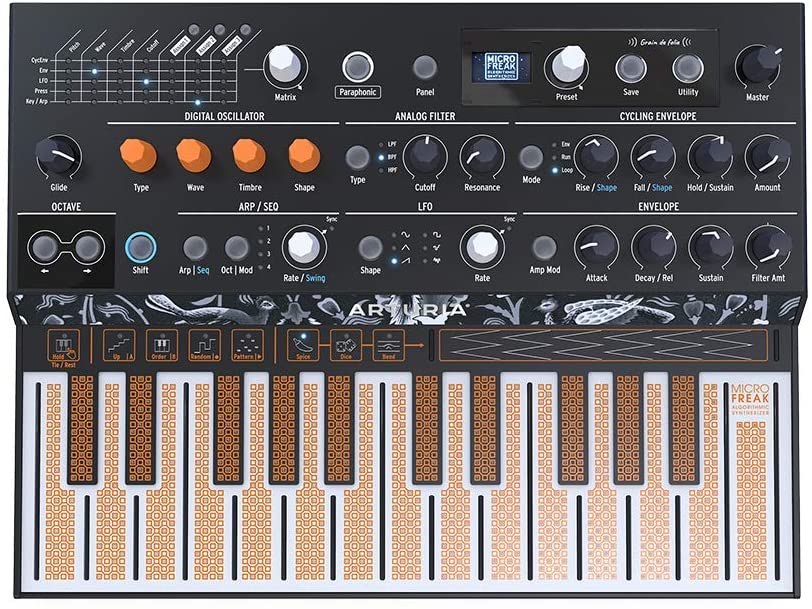
The Arturia MicroFreak may not be the best beginner synth because it’s radically different in terms of architecture and form factor when compared to other synths on our list. The MicroFreak is a digital synthesizer but it does have an analog filter to warm up the sounds. There are analog purists when it comes to synthesis but ignoring digital synths means discarding some exciting possibilities when it comes to sound design.
The MicroFreak has some interesting oscillators that can generate plucked sounds, glitchy tones, physical modelling, speech and wavetable synthesis and more. For the price this little keyboard has a great deal of functionality but the format is very unconventional. Although there is a keyboard. it isn’t a traditional key setup, Arturia went with a capacitive set of touch plates that react to your skin. The MicroFreak is paraphonic which isn’t true polyphony but it does allow the player to play several notes at the same time with limitations on articulation.
The MicroFreak has a deep digital sound engine, an extensive modulation matrix and sound shaping tools. This little synthesizer can create deep basses, screaming leads, gentle sounds, FX and many other sounds that you never even considered making. Although this may not be an ideal first synthesizer it’s certainly a great choice if you want to create new tones outside of subtractive analog synthesis.
Connectivity: 1/8″ (external audio), 1/8″ (VCA/line), 1/8″ headphones, MIDI In/Out/Thru/USB
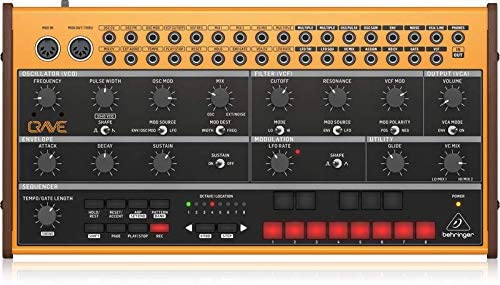
The Behringer Crave may be the best analog synthesizer for beginners because it packs a lot of functionality into a small package and this is why it’s our best value pick. The Crave is semi-modular desktop synthesizer with a one oscillator, 30 patch points and a built-in mini keyboard and sequencer. The oscillator is a clone of the famous Curtis 3340 chip and it can generate a pulse or sawtooth waveform. Further sounds can be mixed in with an external audio source or you can add use the white noise generator.
This may sound simple, but with the extensive patch bay you can interrupt the signal path and create many new and evolving sounds. The envelope generator and LFO can be assigned freely to really change the character of the sound in subtle or dramatic ways. The envelope can be bypassed if you want a drone type sound and the 24dB analog ladder filter can be set to a low or high pass response.
Each knob has a dedicated function, there is no menu diving and you cannot save a sound. If you want to access a sound you like later you need to take a picture or take some notes. Any sequences that you create can be saved using the Behringer Synth Tool software and you can access 64 saved sequences directly on the unit. A built-in arpeggiator has 8 patterns with a knob to change the not gate length and tempo.
With so many synthesizers on the market, it can be daunting for a beginner to choose the right instrument. So, here we’ve compiled a buying guide with features to consider and answers to frequently asked questions to help you navigate shopping for your new synth.
Here are just some of the features you should consider before making your final purchase decision.
The main difference that you need to consider is do you want an analog or digital synthesizer. This isn’t a choice of which one is “best” because they can create different types of sounds. A good compromise on our list would be the Korg Minilogue XD which features analog and digital oscillators. Many people consider digital synths to have a “colder” sound compared to an analog sound engine but this can be replicated with good sound design choices. If you want the flexibility of a digital synthesizer with an analog filter to “warm” the sound up the Arturia MicroFreak may be a good compromise.
If you’re looking for the best keyboard synthesizer for beginners and you’re interested in the synths on our list, the types of sound you can make are virtually limitless. Generally speaking, there are three common synthesis types, they are: subtractive, FM and wavetable synthesis. Subtractive synthesis is the method used on every analog synth on our list. Frequency Modulation or FM synthesis uses operators as oscillators that are combined together in different configurations to generate tones. Wavetable synthesis uses digital waveforms that can be played at various points, played in reverse or scanned to create new sounds. There are many other types of synthesis types but a detailed explanation is far beyond the scope of this beginner’s guide.
The polyphony of a synthesizer denotes the number of notes that can be played at once. A monophonic synth such as the Arturia MicroBrute can only play a single note at a time. But, a polyphonic synth such as the Roland JU-06A can play more (in this case 4 notes).
Generally speaking, a polyphonic synth will cost more than a monophonic instrument. This is why you can find polyphonic hardware synthesizers for under $1,000 but the compromise is that they have a lower polyphony count. A prime example from our list would be the Korg Minologue XD.
If you want a full-sized piano keyboard you will need a big budget to match your ambitions. If you have less money to spend you need to make some compromises and this can even extend to the size of the keys. Korg uses a “slim key” on the Minilogue that is a little smaller than a regular keyboard key to save space and reduce production costs. Some people can tolerate smaller keys and fewer keys to play and others cannot. A good compromise is to get a midi controller keyboard with more full-sized keys and use that to play your synthesizer instead. When it comes to control, all of the synthesizers on our list have, such as the Behringer Crave which has plenty of knobs to twiddle when playing.
The oscillators are the basic building blocks of synthesis and if you have more than one you can combine them together to create new sounds. Certain synths such as the Arturia MicroBrute only have a single oscillator but you can mix waveforms together to create variety in your sounds. Setting oscillators to different pitches can sound pleasing to the ear when played together and this is how you can “thicken” up your sounds. Every good synthesizer has a filter that puts a final polish on the sound and gives it some character. This is equally true if you have an analog or digital filter and many seasoned synthesists can recognize the source of a sound by the filter alone.
It’s nice to have some built-in effects because they can really add some movement and space to the sound. But, the effects on most synthesizers are not as good as a dedicated effects unit or your favorite VST software plugins. Many are usable such as those found on the Korg Minilogue XD but over time most players buy effects pedals and other units to expand their sound palette.
Every synthesizer has at least one envelope generator to alter the sound over time. An envelope would typically affect how fast the sound goes from quiet to loud, how long it would stay loud and how quickly it would return to zero again. This is usually presented as the Attack, Decay, Sustain and Release times or ADSR. The way that the sound develops over time will have a dramatic effect on the overall sounds. As an example: shorter sustain and release times would make the sound shorter and more percussive in nature.
Most synthesizers have Midi, USB ports or sync ports to connect them to other gear. This could be a computer to keep your synthesizer in time with your DAW or other hardware instruments such as drum machines or other synthesizers. Many synthesizers still use a TRS audio jack to make audio connections but smaller units such as the Roland JU-06A now use a 3.5mm stereo minijack instead. Smaller connections make a synthesizer more portable but if you want to feed signals into other gear or a mixer you will need adaptors. Some synthesizers such as the Korg Minilogue XD even have an audio input jack that allows you to process external audio through the synth engine and/or filter.
All of the synthesizers on our list are portable for live use or to bring to a studio session. If you like to play live a built-in keyboard is more desirable and you will need a hard case to protect your instrument.
Many modern synthesizers feature a built-in sequencer and/or arpeggiator to play with. It’s great fun to create sequences in this way, but it is limited if you’re used to sequencing in a DAW environment. Remember, if you like the sound of a synth and it has plenty of connectivity you can play it and sequence it in many different ways. Think of a built-in sequencer as an extra fun feature and you won’t be disappointed that it isn’t as flexible as a dedicated hardware unit or software.
As you can see, there are some fantastic synthesizer models on the market that are suitable for beginners. From the small form factor of the Roland JU-06A, which captures the essence of the Juno series to the Korg Minilogue XD that offers great power without compromising on value for money.
However, the stand out as the best synthesizer for beginners must be our editor’s choice, the Arturia MicroBrute. This impressive synth has a multifunction oscillator, patch bay and mixer section. This offers surprising versatility with each waveform having its own dedicated slider. Despite this functionality, the MicroBrute will not break the bank.